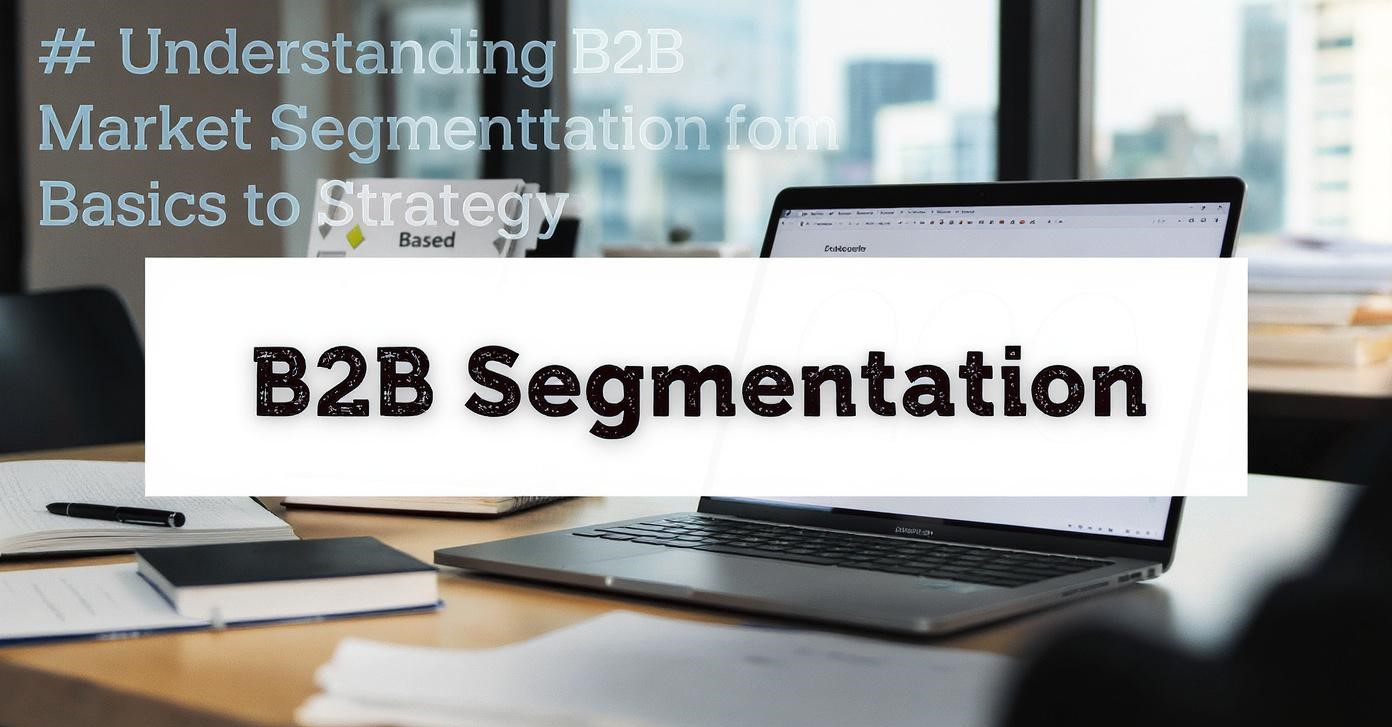The Complete Guide to B2B Market Segmentation and Targeting is essential for businesses that want to refine their marketing strategies, improve lead quality, and increase sales efficiency. At Acceligize, we emphasize that B2B Market Segmentation is more than dividing a market into groups. It is about understanding business needs, prioritizing opportunities, and creating actionable insights that drive growth. This guide explores the fundamentals of segmentation and how to implement strategies effectively.
Understanding B2B Market Segmentation
B2B market segmentation is the process of dividing a large business market into smaller groups based on shared characteristics, behaviors, or needs. Unlike B2C segmentation, which often focuses on demographic and psychographic factors, B2B segmentation emphasizes firmographics, technographics, buying behaviors, and specific business requirements. Proper segmentation allows businesses to develop personalized marketing messages, prioritize high-value prospects, and align product offerings with the unique needs of each segment. By focusing resources on the right accounts, organizations can maximize ROI and achieve more predictable results.
Importance of Segmentation in B2B
Segmentation is critical because B2B purchases often involve multiple decision-makers, longer sales cycles, and larger investments. Without segmentation, businesses risk targeting the wrong accounts, sending generic messages, and wasting resources. Effective segmentation enables organizations to prioritize accounts with high potential, improve lead quality, shorten sales cycles, and align marketing and sales efforts. Companies with strong segmentation frameworks are better equipped to make informed decisions and achieve consistent growth and customer satisfaction.
Key Dimensions of B2B Segmentation
A comprehensive segmentation approach considers multiple dimensions:
-
Firmographic Segmentation: Divides companies by industry, size, revenue, location, and structure. Firmographics help identify patterns and similarities among target businesses.
-
Technographic Segmentation: Analyzes the technologies and software solutions used by companies. This helps in identifying opportunities for integration and targeting specific product solutions.
-
Behavioral Segmentation: Focuses on company interactions such as website visits, content downloads, webinar participation, and purchase patterns. Behavioral insights help tailor messages to the level of engagement and readiness to buy.
-
Needs-based Segmentation: Identifies the primary challenges, priorities, and goals that influence business decisions. Insights from surveys, interviews, and research help create compelling value propositions for each segment.
-
Value-based Segmentation: Prioritizes accounts based on potential revenue, strategic value, or long-term growth opportunities. This ensures that resources are allocated efficiently to high-impact accounts.
Developing a Segmentation Strategy
Creating an effective strategy begins with mapping the Total Addressable Market (TAM), narrowing it to the Serviceable Available Market (SAM), and defining the Ideal Customer Profile (ICP). The ICP highlights companies that are most likely to benefit from your solutions and deliver significant value. After defining the ICP, businesses can develop Target Account Lists (TALs), design segment-specific messaging, and run campaigns that resonate with each group. This structured approach ensures alignment across marketing, sales, and product teams and maximizes the impact of segmentation initiatives.
Using Data to Strengthen Segmentation
Data quality is fundamental for successful segmentation. Sources include internal CRM systems, website analytics, third-party databases, and intent data that indicates which companies are actively researching solutions. Combining firmographic, technographic, and behavioral data improves segmentation accuracy. Regularly validating and updating data helps prevent errors, ensures precise targeting, and allows companies to adapt to evolving market conditions.
Aligning Sales and Marketing Teams
Segmentation provides a common framework for marketing and sales alignment. Teams can agree on which accounts to prioritize, define criteria for qualified accounts, and decide on the best engagement approach. Alignment reduces friction during lead handoffs, ensures consistent messaging across channels, and increases conversion rates. By understanding the needs of each segment, teams can implement campaigns that resonate with prospects and strengthen relationships with key accounts.
Measuring Segmentation Effectiveness
Tracking key performance indicators such as engagement rates, conversion rates, average deal size, sales cycle duration, and cost per acquisition is essential to evaluate segmentation effectiveness. Monitoring these metrics allows organizations to identify high-performing segments, refine campaigns, and make data-driven adjustments to resource allocation. Regular assessment ensures segmentation strategies remain aligned with business goals and continue delivering value.
Common Challenges in Segmentation
Organizations may face challenges such as over-segmentation, reliance on a single dimension, and outdated or incomplete data. Over-segmentation can create operational complexity and reduce focus. Using only one dimension may overlook important behavioral or technological insights. Inaccurate or outdated data can misguide marketing efforts and reduce efficiency. A multi-dimensional approach that combines firmographic, technographic, behavioral, and needs-based insights ensures segmentation is actionable and impactful.
Implementing Segmentation Strategically
Strategic implementation involves aligning product offerings, messaging, and communication channels with each segment. Segment-specific campaigns, targeted messaging, and customized solutions ensure that marketing and sales efforts resonate with the audience. For example, some segments may prioritize cost efficiency and speed, while others focus on security, compliance, or customization. Proper strategic execution increases engagement, improves conversion rates, and builds stronger client relationships.
Continuous Iteration and Optimization
Effective segmentation requires ongoing monitoring and refinement. Markets evolve, buyer behavior changes, and technology advances, making continuous iteration essential. Feedback from sales teams, customer interactions, and research should inform adjustments such as combining, splitting, or reprioritizing segments. Continuous optimization ensures that segmentation remains relevant, effective, and supports sustainable growth.
Key Takeaways
B2B market segmentation enables businesses to target the right accounts, optimize marketing and sales operations, and drive measurable growth. By leveraging multiple segmentation dimensions, maintaining accurate data, aligning internal teams, and continuously refining strategies, companies can create actionable frameworks that improve decision-making, conversions, and market positioning. Acceligize helps businesses develop segmentation strategies that deliver predictable results and long-term success.
About Us : Acceligize is a global B2B demand generation and technology marketing company helping brands connect with qualified audiences through data-driven strategies. Founded in 2016, it delivers end-to-end lead generation, content syndication, and account-based marketing solutions powered by technology, creativity, and compliance.


